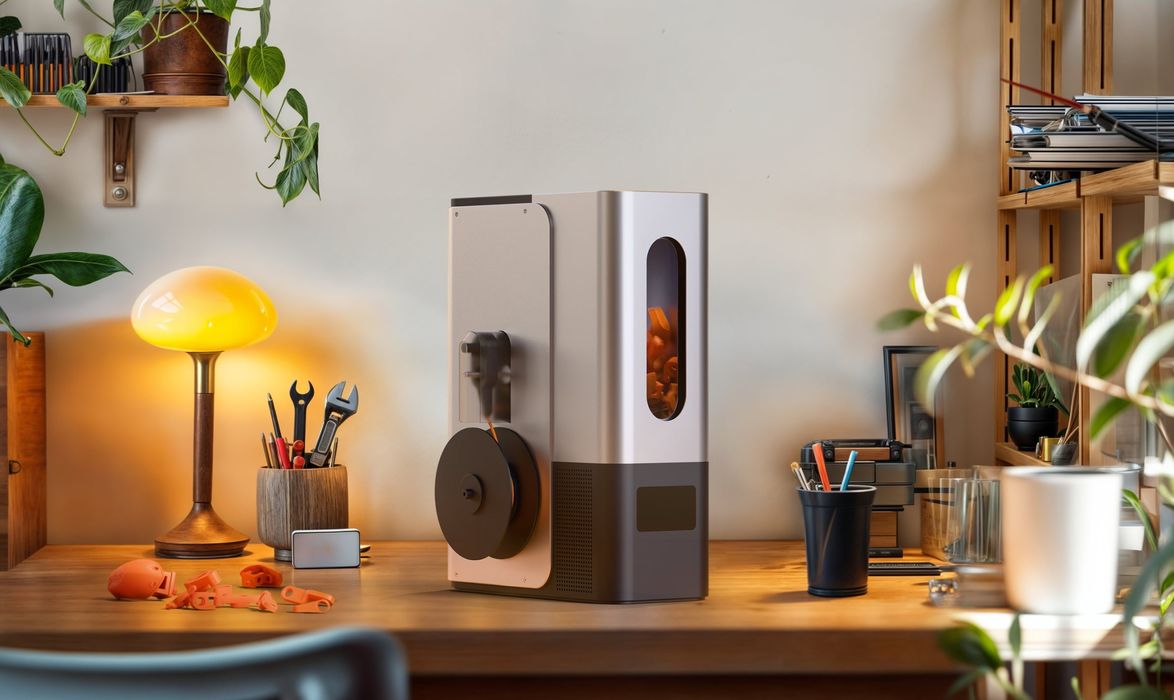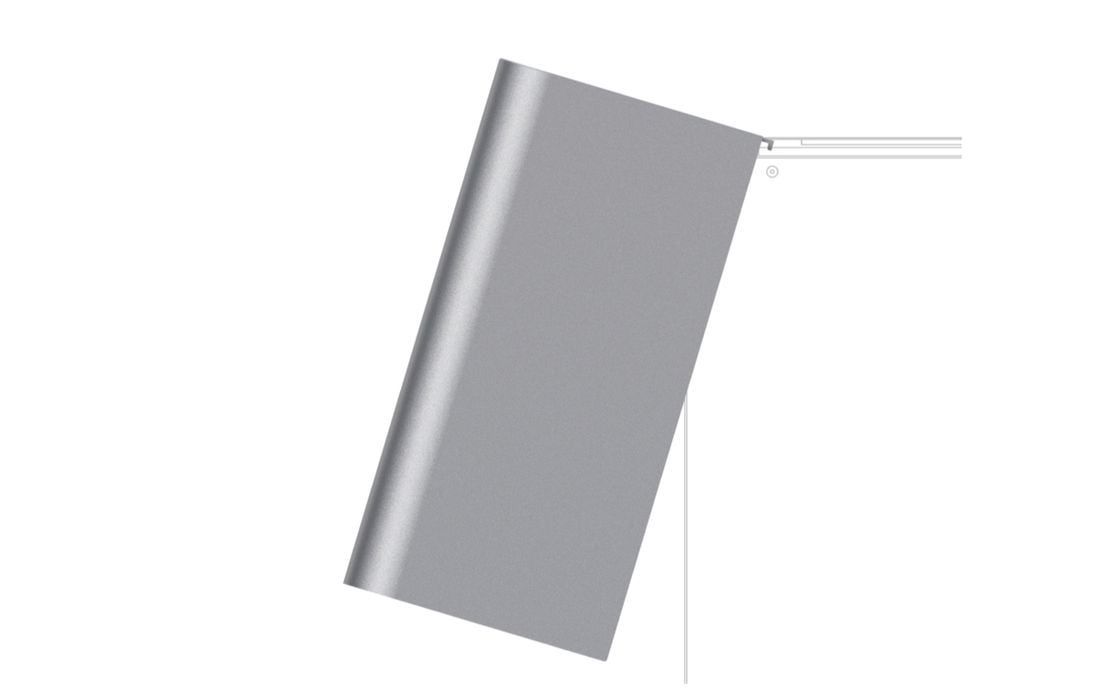
There might be a new desktop filament production system on the market: the LOOP. Or not.
A very curious web page appeared recently, describing a new filament making machine. It’s intended to transform 3D print scraps and waste into usable filament.
Then I read their headline, which stated:
”The world’s first desktop 3d filament maker”
This is absolutely untrue, as there have been many desktop filament making machines. Virtually all of them failed miserably, because the production of filament is actually extremely difficult. Only one provider has succeeded, 3DEVO. That company makes a suite of devices that can accept pellets or scraps, and transform them into truly usable 3D printer filament.
Because of the questionable history of desktop filament making machines, I am skeptical of this venture. Nevertheless, let’s take a look at what’s stated on their web page.
The device is not yet available, nor are any prices set. They say they are “Launching soon”, but there’s no indication of when that might be. It could be that they are measuring interest in the product by collecting email reservations.
Something that makes me suspicious is that all of the images of the LOOP product appear to be renders, rather than actual photographs. It may be that they haven’t finalized the industrial design of the product, but at least they could have shown imagery of a prototype to demonstrate that it actually works.
They describe three steps in the operations process:
- “Blends” old parts
- “Extrudes” consistent filament
- “Spools” automatic winding
This is really curious to me: “Blends” is not a term used for this step. Normally it’s called shredding. Extrusion makes sense, and consistently is certainly required given the near-perfect filament requirements of today’s high speed FFF 3D printers. It’s not clear to me that the “blender approach” with a single set of blades at the bottom would actually work. Most shredding systems have very strong crushing wheels.
Automatic winding is required. Very early attempts at desktop filament production sometimes forgot this step, leaving massive tangles of filament on the floor. However, it’s tricky to get the spool to perfectly match the output speed of the extruder. If you don’t, then the filament’s ultimate diameter can vary.
They say that the LOOP provides “0.01mm precision” in very big letters. But further down they say that the tolerance is “+/- 0.07” mm.
I’m not sure what this means. Does it mean that the filament can vary in diameter by up to 0.07mm larger or smaller than the target diameter? Or 0.01mm? Or is the 0.01mm represent the accuracy of the diameter measurements?
I’m thinking you’re going to get filament varying by 0.07mm, up or down. In other words, a 1.75mm filament might be as thin as 1.68mm or as thick as 1.82mm. That’s not very good at all.
For reference, a typical high quality filament on the market is Prusament, which offers documented tolerance of +/- 0.02mm. Most regular quality providers have at least +/- 0.05mm tolerance. It seems that the LOOP might produce lower quality filament.
Something that isn’t mentioned at all is cooling. Filament must be very precisely cooled, otherwise it can vary in diameter. Presumably the LOOP has some powerful internal fans for this?
For noise levels, they say:
”quiet & powerful blending
engineered for endurance, our blades defy wear and tear with premium materials & meticulous design. our insulated sound shield turns a loud roar into a low hum.”

The small LOOP device must have some interesting sound baffles embedded in its aluminum walls, as rattling 3D print scraps would otherwise be quite loud. They describe a “Sound Shield”, that “quiets the beast within”. At 65dB, it would be pretty quiet.
The LOOP will produce 1kg spools in either 2.85mm or 1.75mm format. They say it can handle PLA, ABS and PETG materials, although it’s likely they can handle a few more, like PCTG, HIPS, etc. TPU and flexible are likely out because they probably can’t be chopped up easily.
One very curious aspect of their web page is that the device specifications are provided in imperial measurements: inches and ounces! I’ve never seen ounces used as a weight measurement in 3D printing.
They describe a “LOOP community” where participants can collaborate on customized enhancements to LOOP equipment. This could be quite interesting, and especially if it is open source, as they write.
There’s no price on the device, although by joining their mailing list you are eligible for an unknown discount. I’m very interested in the price point, because that is a key success factor for the product. Prior attempts at filament production either failed or had to resort to somewhat higher price points, like 3DEVO. Because of the pricing, most of 3DEVO’s customers use the equipment not for recycling scrap, but instead for experimenting with new filament mixes or producing custom filaments that cannot be purchased.
If the LOOP’s price point is too high, no one will buy it. For example, if the price is US$1000 (a price far lower than 3DEVO), that is equivalent to buying around 100 spools of filament at bulk rates. Would you rather have 100 spools of actual high quality filament, or a machine that may or may not make lower quality filament?
Finally, the LOOP seems to be a product of O0 Design. The company’s tagline is:
“We design products and brand them up. Commonly for tech and lifestyle startups.”
The company lists several prior products, including a pet tracker, a password manager, skincare app, a fertility app, and a water “reimagination product”. None of these relate to 3D printing, and they’re not even in adjacent domains. This likely explains why the LOOP page includes so many oddities: the makers evidently don’t understand the market. They are even unaware that there is already a LOOP product in 3D printing.
That’s a very strong negative signal in my mind: the production of 3D printer filament is extremely complex and requires considerable experience and equipment to achieve. It’s very hard to imagine someone coming from outside the industry with no 3D print experience attempting to build a filament maker in this way.
I’ll be watching this project, but so far it doesn’t seem to have the right mix of quality, price, experience and evidence to succeed.
